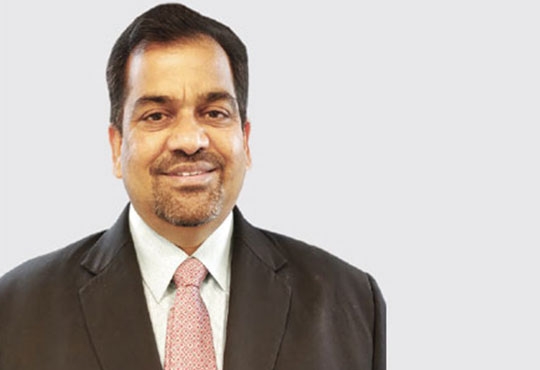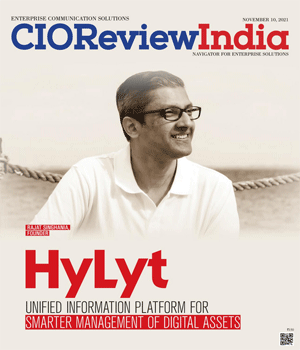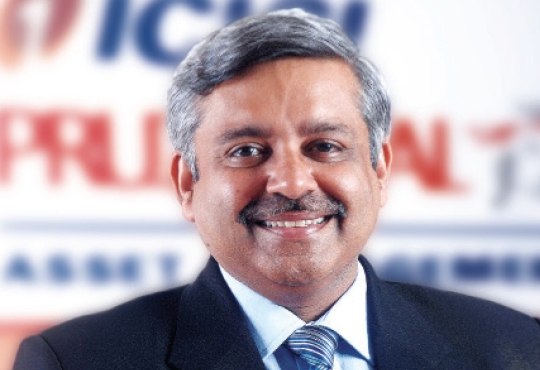
Attracting Customers in a World with More Mobile Phones than People
Howard Stevens, Global Head, Carrier Services (telecommunications), BlackBerry | Thursday, 02 June 2016, 10:18 IST
 Mobile technology has never been as powerful as it is today. Portability is vital in today’s dynamic world. In the age of non-stop connectivity, people are constantly in search of newer, faster, and easier ways to connect. Within the past five years we’ve watched the mobile phone evolve from a personal calling gadget to the smartphone—a powerful multi-media device that is always on and connected. The mobile user has changed as well. Today, we expect our mobile device not only to make calls and send texts, but also provide unlimited high-speed data, store a mountain of apps, serve as a shopping cart, and help us navigate and locate us anytime and anywhere.
Mobile technology has never been as powerful as it is today. Portability is vital in today’s dynamic world. In the age of non-stop connectivity, people are constantly in search of newer, faster, and easier ways to connect. Within the past five years we’ve watched the mobile phone evolve from a personal calling gadget to the smartphone—a powerful multi-media device that is always on and connected. The mobile user has changed as well. Today, we expect our mobile device not only to make calls and send texts, but also provide unlimited high-speed data, store a mountain of apps, serve as a shopping cart, and help us navigate and locate us anytime and anywhere.
Mobile has changed the world and cheap mobile devices and calling plans have accelerated the spread of mobile to over seven billion subscriptions globally. Today, mobile penetration in developed countries stands at 128 percent, which means that there are more mobile phones than people. So far mobile operators have found ways to continually grow their customer base—but as the market becomes more competitive, it will become even more important for operators to optimize and personalize the customer experience to increase loyalty and customer retention. In this environment, telecom operators will need to master how to best protect their customer base and to identify the right customers and strategies to approach them.
Better understanding of customers will only further expand the benefits of mobile that we’re already seeing. Studies have shown that introducing 10 new mobile telephones per 100 people in the developing world can add between one half to one percent to a country’s GDP growth rate.
The mobile industry has been expanding all over the globe, giving people the power to stay connected and have unlimited opportunities to improve their lives and businesses. It has been especially transformational for emerging economies. In 2013, the mobile industry in China grew 40 percent. In Kenya, 25 percent of the country’s GNP flows through the mobile phones in the form of mobile commerce. In parts of rural South Africa, where there are hardly any paved roads, small shop owners are able to do so much more with phones saving time and money.
Technology can enable not only a better customer experience, but also better Big Data management and predictive analytics to increase brand loyalty. By understanding customer data, providing faster information, and creating a simpler and more enjoyable service, mobile providers are able to keep their customers empowered and informed.
The mobile industry has been challenged by mountains of unstructured data that results in slow response to customer needs which makes it difficult to realize true customer insight. This often leads to a poor customer experience but now this is changing. For instance, T-Mobile has used the latest technology, including our SAP HANA in-memory platform, to create a new customer engagement model targeting the latest customer needs.
Just recently T-Mobile reported its ‘best ever’ quarter with 2.4 million new customers. Introducing a new sales model with new installment plans, the elimination of early termination fees, and pay-offs to its competitors’ customers for switching networks has proved that there are new ways to improve customer experience. In the end of 2013, AT&T followed this same approach and created their own version of the new model by offering unlimited services and more usage sharing capabilities for new customers.
To stabilize their market position, many operators in developed countries have also been keen to introduce innovative services to retain high-income customers whose data usage is higher than average. Near 100 percent broadband coverage has allowed television channels to offer live programming through their mobile apps, which answers the demand of the dynamic style of living in today’s fast-paced environment—to always be informed no matter where you are.
Targeting customer needs has built a path to success in the competitive mobile market. Moreover, to be the leader in the market many mobile providers use the customer interaction and history data captured across channels in order to build an intelligent data base that would provide targeted offers and responses based on previous customer behavior.
Mobile operators are increasingly targeting the younger generation, as they constitute the most demanding segment of global mobile users. Since most millennials in the U.S. watch less TV than their parents, services like HBO GO, Netflix and Hulu have seen a spike in subscriptions. The younger generation doesn’t want to waste time sitting on the couch in front of the TV–they want to watch it on mobile phones and tablets on the go.
As developed markets try to keep their customers interested, emerging economies are rapidly driving growth. Last year, the North American market grew less than one percent, while Latin America grew over five percent.
Though the drive may be different, I expect we will see a continued laser focus on customer centricity in both developing markets, where the industry growth is still occurring, and mature markets, where it’s a zero sum game and net new subscribers have to be cajoled away from the competition, over the coming months and years. In my opinion, the only way to effectively engage more with subscribers is by leveraging the vast amounts of data available to service providers in order to understand customers and their preferences and by building a next generation marketing and technology platform that enables real-time actions on those insights. For the service providers that really grasp and implement the next levels of true customer engagement the rewards will be enormous as it puts them in the pole position for the consumer oriented technology advancements that we will see over the next five to ten years.
CIO Viewpoint
The Three Dimensions Of Digital Transformation
By Arun Kumar Singh, SVP & Business Unit Head at Quinnox
Digital Transformation in the Insurance Domain...
By Ekhlaque Bari, EVP-IT, Max Life Insurance
A Practitioner's Perspective of Key Hacks to...
By Lalit Popli, Head - Information Technology, ICICI Prudential AMC
CXO Insights
Digital Transformation & Working Remotely Is...
By Rahul Sharma, MD - India, LogMeIn
Customer Happiness: The New Mantra Of CX
By Kavita Viswanath, GM, JFrogIndia
Artificial Intelligence A Boon Or Bane?








